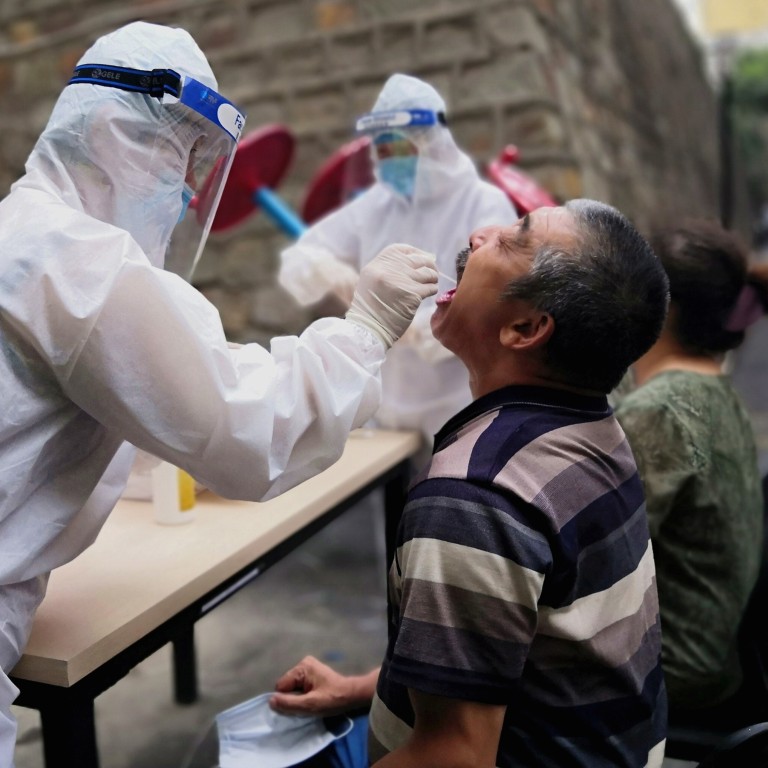
China urges eye clinic patients to come forward after student tests positive to coronavirus
- Health authority concludes virus case was imported to Hangzhou from Xinjiang on the other side of China
- Strict measures to stop outbreak in Urumqi include quarantining the close contacts of close contacts of positive cases
The 19-year-old student tested positive for both antibodies and the virus when he visited the clinic at the Second Affiliated Hospital of Zhejiang University school of medicine for a procedure on Tuesday.
The region has reported 670 Covid-19 cases in less than a month, gradually rising from single digits and peaking on July 30 with 112 cases and then falling to dozens of new cases each day. It reported 22 new cases on Tuesday.
The patients were an average 35 years old and, as such, their cases were mostly mild, according to Jiao Yahui, a senior official with the National Health Commission. Some patients were discharged after two weeks in hospital and 52 of the 670 cases since July have been discharged.
Most of the cases were reported in the Xinjiang capital Urumqi, where the subway was stopped and residential areas were closed under a lockdown.
Unlike other cities, Urumqi has not released epidemiological investigation results but Jiao suggested this was not necessary because, in addition to quarantining the close contacts of people who tested positive for the coronavirus, close contacts of those close contacts were also quarantined as a precaution.
“Our epidemiological investigators and relevant personnel, such as information technology personnel, have used big data and large-scale nucleic acid tests to cover all personnel,” Jiao said on Wednesday morning. “We have expanded the epidemiological investigation to close contacts of the close contacts and all were under centralised medical observation under quarantine.”
The health commission had sent a team of more than 400 staff from 12 provinces to help Urumqi carry out large-scale tests. They were now conducting 700,000 tests a day and so far had done about 6 million tests, she added.
The source of the outbreak in Xinjiang is still unknown. The local health authority last month denied speculation that it was imported from neighbouring Kazakhstan and said the first known case in the region had no history of overseas travel.
Cui Yan, director of the Xinjiang Centre for Disease Control and Prevention, said epidemiological investigations showed the cases were from the same source and genome sequencing of early cases indicated “the epidemic originated from the same source of infection”.
Jiao said researchers were working on tracing the origin of the infection, including virus isolation and cultivation and genome sequencing.

